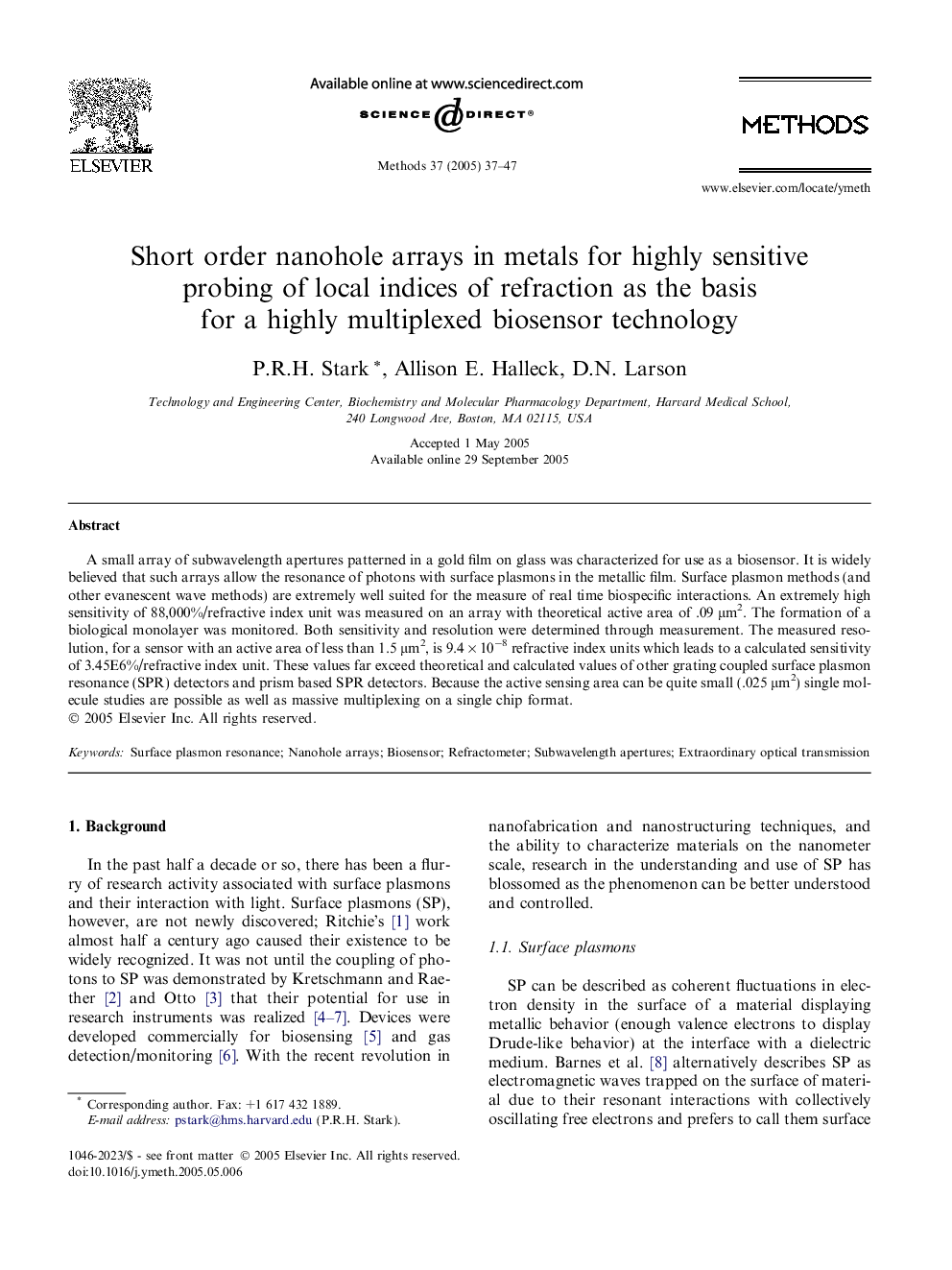| Article ID | Journal | Published Year | Pages | File Type |
|---|---|---|---|---|
| 10826659 | Methods | 2005 | 11 Pages |
Abstract
A small array of subwavelength apertures patterned in a gold film on glass was characterized for use as a biosensor. It is widely believed that such arrays allow the resonance of photons with surface plasmons in the metallic film. Surface plasmon methods (and other evanescent wave methods) are extremely well suited for the measure of real time biospecific interactions. An extremely high sensitivity of 88,000%/refractive index unit was measured on an array with theoretical active area of .09 μm2. The formation of a biological monolayer was monitored. Both sensitivity and resolution were determined through measurement. The measured resolution, for a sensor with an active area of less than 1.5 μm2, is 9.4 Ã 10â8 refractive index units which leads to a calculated sensitivity of 3.45E6%/refractive index unit. These values far exceed theoretical and calculated values of other grating coupled surface plasmon resonance (SPR) detectors and prism based SPR detectors. Because the active sensing area can be quite small (.025 μm2) single molecule studies are possible as well as massive multiplexing on a single chip format.
Keywords
Related Topics
Life Sciences
Biochemistry, Genetics and Molecular Biology
Biochemistry
Authors
P.R.H. Stark, Allison E. Halleck, D.N. Larson,
